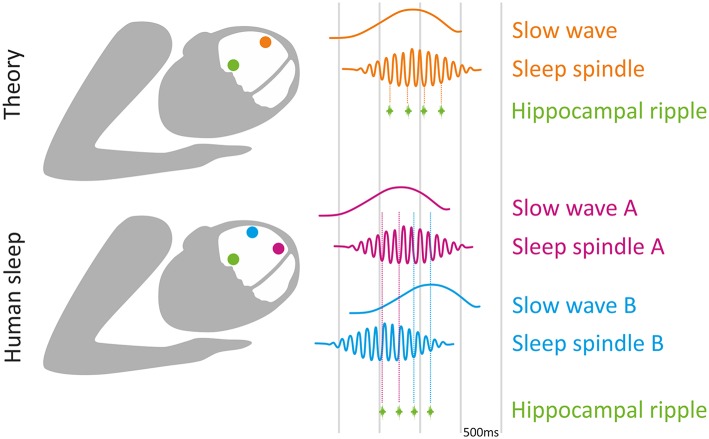Figure 1.
Local sleep oscillations and memory consolidation: theory vs. experimental findings. (Top) Theory suggests that the nesting of hippocampal ripples (green) to sleep spindle troughs (orange), which in turn are nested in slow wave up-phase (orange), is critical for memory consolidation during sleep. (Bottom) Experimental data indicates that timing of both slow waves and spindles (as well as spindle nesting phase; Andrillon et al., 2011) varies across cortical regions (purple and blue), such that the nesting of each ripple (green) inevitably corresponds to different cortical locations (dashed vertical lines). Thus, each hippocampal ripple occurring at a specific time is associated with hippocampal-cortical coupling in different circuits, likely supporting memory consolidation related to that circuit.

